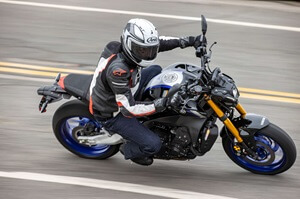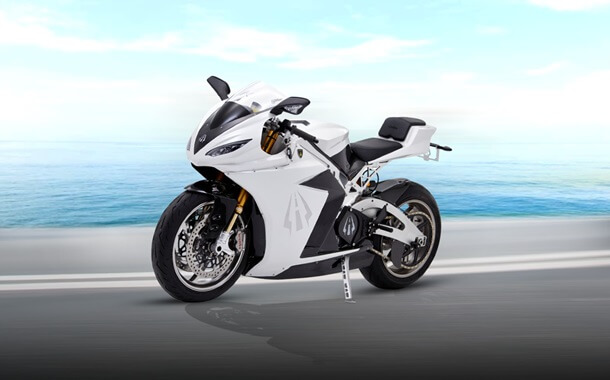How Much Does a Motorcycle Cost?
Last Updated on April 3, 2024
Written by CPA Alec Pow | Content Reviewed by ![]() CFA Alexander Popinker
CFA Alexander Popinker
For many riders, motorcycles represent freedom, exhilaration and a sense of escape. But buying and owning a motorcycle also comes with considerable costs. What should you realistically budget for the purchase price, insurance, gear, maintenance, and additional expenses?
This detailed guide examines the many factors impacting motorcycle pricing across all riding styles, budgets, and needs.
How Much Does a Motorcycle Cost?
A motorcycle will likely cost between $4,000 and $30,000, depending on its type, its engine capacity, and several other important factors. To set expectations, here are some average new motorcycle price ranges grouped by popular riding categories:
- Commuter – $4,000-$7,000 – 250cc to 500cc engines provide affordable and efficient transportation.
- Cruisers – $6,000-$20,000 – Engine sizes up to 2000cc, emphasis on custom styling details.
- Sportbikes – $8,000-$15,000 – 600cc to 1000cc performance-tuned engines built for acceleration and handling.
- Touring – $15,000-$30,000 – Large displacement engines plus integrated storage, comfort and weather protection for long distances.
- Off-road – $5,000-$10,000 – Nimble 250cc to 450cc engines, specialized components for trails and motocross.
- Electric – $8,000-$20,000 – Innovative electric powertrains, eco-friendly operation, high-tech features.
According to J.D. Power, premium motorcycles generally start around $20,000 and can go as high as $65,000. The cost of a motorcycle can vary based on factors like brand, condition, time of year, new or used purchase, and additional expenses like gear. Prices for some bikes from dealers can range from $7,000 to $8,000.
Move.org writes that the average cost to ship a motorcycle is approximately $940, but prices vary based on things like transport type and distance.
An Overview of Motorcycle Types
Motorcycles come in a variety of configurations designed for different riding purposes:
- Cruisers – Feature a low, laid-back seating position, larger displacement engines, and custom styling details. Ideal for relaxed weekend enjoyment.
- Sportbikes – Offer an aggressive riding stance, extremely responsive handling, and blistering acceleration. Perfect for performance enthusiasts and track days.
- Touring – Have comfortable ergonomics, wind protection, integrated storage space, and extras for multi-day trips.
- Off-road – With tall suspension, knobby tires, and lightweight frames, they excel at trail riding and motocross.
- Electric – Provide an innovative, eco-friendly riding experience with instant torque and ultra-quiet electric motors.
Factors That Drive Motorcycle Pricing
Several primary considerations influence the costs across motorcycle styles and models:
- Engine displacement – Larger engines mean higher power output potential, which translates to increased pricing. 600cc+ sportbikes and cruisers can cost $8,000 and beyond.
- New vs. used – New motorcycles depreciate quickly, so 1-2 year old used bikes often provide better value and lower cost.
- Brand and model – Premium motorcycle manufacturers like Honda, Yamaha, and Harley-Davidson command higher prices than less known brands.
- Features – Advanced safety aids, comfort amenities, performance components, and innovative materials raise the price.
- Custom builds – Unique special-order styling, performance modifications, or engine work add to the expense.
You might also like our articles about the cost of motorcycle wrapping, getting a motorcycle license, or rebuilding a motorcycle engine.
Insurance, Gear, and Maintenance
On top of the initial purchase price, motorcycle ownership also requires budgeting for:
- Insurance – To protect against liability or theft. Full coverage costs $500-$2000+ per year depending on the bike, rider age/experience, and desired policy limits.
- Riding gear – Helmet, jacket, gloves, and boots for safety. Approximately $500-$2000+ for a complete set of quality gear. Requires periodic replacement.
- Maintenance – Oil changes, new tires, brake work, chain adjustments/replacement. Budget $200-$1000+ per year for regular servicing based on mileage.
These additional expenses are mandatory aspects of responsible bike ownership.
Financing Opens Doors for Many Riders
If saving to pay cash outright is unrealistic, motorcycle financing helps make purchasing power possible:
- Interest rates – Typically 4-10% APR for buyers with good credit. Rates are higher for used bikes.
- Loan term lengths – Repayment durations of 12-72 months. Longer terms have lower monthly payments but higher overall interest costs.
- Lending sources – Loans available through dealerships, banks, and credit unions. Compare rates and eligibility requirements.
- Affordability checks – Lenders want motorcycle payments to be no more than 10-15% of your take-home income.
Leveraging financing wisely makes bike buying accessible while fitting within prudent budget limits.
The Optimal Motorcycle for Your Needs
 Your intended riding style and needs should dictate the ideal motorcycle features and type:
Your intended riding style and needs should dictate the ideal motorcycle features and type:
- Engine performance – More power and displacement for highway touring, less for primarily urban transportation. Fuel efficiency and gas costs are considerations too.
- Comfort and ergonomics – Cruisers offer a relaxed and low-slung fit, while sportbikes have a more aggressive and tucked riding posture.
- Safety technologies – Stability control, traction control, and ABS are highly recommended and potentially lifesaving features for street motorcycles.
- Practicality – Look for lockable storage to safely stow gear, wind protection, and extended range capabilities if planning multi-day trips.
Take time test riding a variety of motorcycles to find the perfect match based on fit, handling dynamics, power delivery, and pricing that fits your budget.
Maintaining Your Motorcycle
Like any vehicle, proper maintenance is key to motorcycle safety, performance, and longevity. Typical maintenance costs include:
- Oil and filter changes – $100-150 every 5000 miles.
- Tire replacement – $150-300 every 8000-12000 miles.
- Major service intervals – $500-1000 every 12,000-18,000 miles.
- Chain and sprocket replacement – $300-600 every 10,000-20,000 miles.
- Brake pads – $100-300 every 10,000-20,000 miles.
Don’t neglect regular servicing based on usage. It protects your investment and keeps you safe on the road.
Final Words
In summary, while requiring serious budgeting, motorcycle ownership provides unmatched freedom and excitement. Approach buying with realistic expectations around pricing and expenses. Take time to research insurance, gear costs, and maintenance needs to make a wise purchase. Then get ready to fully experience the open road! Ride on.
Frequently Asked Questions
Are motorcycles cheaper than cars?
In most cases, yes – motorcycles are considerably cheaper to purchase and own compared to cars:
- Purchase price – The average new motorcycle costs $6,000-$8,000. The average new car price is around $45,000.
- Insurance – Full coverage motorcycle insurance averages $500-$2,000 annually. Car insurance is $1400 per year on average.
- Fuel efficiency – Motorcycles deliver 40-60 mpg, while the average car gets 25-30 mpg. More miles per gallon means lower fuel spending.
However, motorcycles lack some amenities like storage capacity, passenger seating, and weather protection. Choose the option that best aligns with your needs and riding intentions.
Is it OK to ride a motorcycle in the rain?
Riding motorcycles in rainstorms is extremely hazardous. The safest approach is to avoid rain riding whenever possible by:
- Checking weather forecasts before trips and cancelling rides if heavy rain is expected.
- Pulling off the road and waiting out lighter rainfall under cover rather than riding through showers.
- Investing in true waterproof riding gear. Avoid riding in thunderstorms or through deep standing water.
If caught in a downpour, drive slowly with extreme care to reach a safe shelter. Remember, wet roads are slippery, reducing traction and braking ability substantially. Never risk your safety in the rain.
How long will a motorcycle last?
Motorcycle longevity depends on several factors, including:
- Make and build quality – Japanese and European bikes often reach 100,000+ miles with proper care.
- Ongoing maintenance habits – Regular oil changes, tune-ups, brake work, etc. prolong lifespan.
- Exposure to weather and riding conditions – Garaging the bike extends its life.
With comprehensive maintenance and off-season precautions, Harley-Davidsons can log 50,000-70,000 miles. Good care means a motorcycle can provide many years of loyal service.


Leave a Reply
Want to join the discussion?Feel free to contribute!